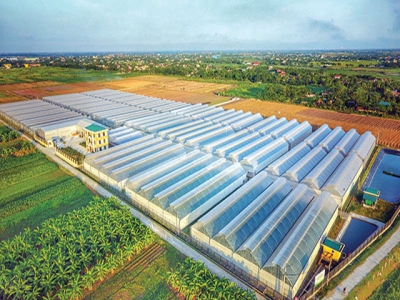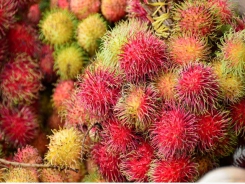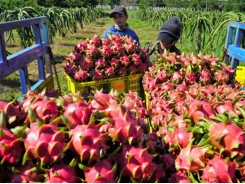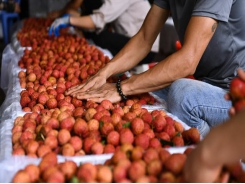Agriculture in a position to grow

Investment in digitalizing the agriculture sector is coming but progress is slow due to long-standing issues.
The Vietnam Digital Agriculture Association (VIDA) was established on September 29 with the mission of improving technological infrastructure in agriculture, connecting internationally and expanding markets, responding to the Politburo’s Resolution No. 52-NQ/TW on Industry 4.0 and aiming for the country to “Be Rich in Agriculture”. Mr. Truong Gia Binh, Chairman of VIDA, told VET that Vietnam’s agriculture sector is strongly shifting toward digitalized production and achieving significant results. “Agricultural production has applied digital technologies instead of traditional methods, such as cloud computing in the care and management of crops, modern technology to operate and manage breeding farms, and managing cloud data in shrimp production and processing,” he said.
Investment coming
Agricultural development towards digitalization is receiving more and more attention from businesses. Vingroup’s VinEco is now operating 14 farms around the country on a total land area of nearly 3,000 ha, along with seven satellite pre-processing facilities and two concentrated processing plants, with total equity standing at over VND4 trillion ($173 million). Ms. Nguyen Thi Phuong Thao, Deputy General Manager of VinEco, told VET that it is producing vegetables on a large scale and applying advanced technologies from countries such as South Korea (advanced mushroom production technology), Israel (fruit and vegetable production technology), and Japan (agricultural mechanization), to optimize efficiency and product quality. When they reach consumers, all VinEco’s products are labeled with a QR code to allow customers to easily trace origin and obtain other useful information.
Vietnam’s agriculture sector has attracted investment from many large groups. The TH Group is known for its outstanding dairy farming and milk processing on a high-tech industrial scale, producing the TH true MILK brand. The project began in October 2009 in north-central Nghe An province with total investment of $1.2 billion, and currently has 45,000 heads of cattle and is the largest dairy farm in Asia.
The Truong Hai Auto Corporation (Thaco) went outside of its normal business line and invested in the construction of an industrial park earlier this year that specializes in serving the agriculture sector in Vietnam’s north. The project covers an area of over 194 ha in Quynh Phu district, Thai Binh province, with total investment of VND7.8 trillion ($337 million). It includes a closed production chain, provides agricultural machinery, equipment, and agricultural supplies, and applies mechanization and technology from land preparation to harvesting.
Other businesses investing in the sector include the PAN Group, the Hoa Phat Group, the T&T Group, and the FPT Corporation, among others. There are 29 high-tech agriculture parks planned in 12 cities and provinces around Vietnam, of which seven have been put into operation, according to VIDA. These include the Thai Nguyen High-Tech Agricultural Application Park in Pho Yen district, Thai Nguyen province, on an area of 300 ha, the Lam Dong High-Tech Agricultural Application Park in Lac Duong district, Lam Dong province, on an area of 221 ha, the Phu Yen High-Tech Agricultural Park in Phu Hoa district, Phu Yen province, on an area of 460 ha, and the Lao Cai High-Tech Agricultural Application Park in Sapa district, Lao Cai province, on an area of 200 ha.
The number of agricultural enterprises applying high technology now stands at 35. “In the context of Industry 4.0, Vietnam’s agricultural development towards digitalization and high technology is taking place on a national scale in agriculture, forestry, and fisheries,” Mr. Binh said.
Bottlenecks remain
Though digitalization in agriculture is indeed developing, many believe there are still too few Vietnamese enterprises investing in the sector, with only a few large corporations doing so.
Mr. Binh pointed out that digitalization in the sector is associated with the modernization of all stages of the chain of production, processing, storage, and consumption, so a large amount of capital and land area are required to ensure feasibility. “This problem is currently only being resolved by large corporations, while most local agricultural enterprises are small or very small,” he added.
Even large corporations, however, have difficulties to address. “When agricultural production enterprises invest in technology, the greatest difficulty is capital to initially invest in synchronous production infrastructure,” Ms. Thao said.
The government issued Resolution No. 30/NQ-CP in 2017 on a credit package of VND100 trillion ($4.3 billion) mobilized from commercial banks to lend for the development of high-tech agriculture and clean agriculture, with interest rates 0.5 to 1.5 per cent lower than market rates. But Mr. Binh said it is still necessary to adopt additional policies to raise capital from other investment funds, organizations, and individuals, as well as to establish land use rights on agricultural land, including for greenhouses and irrigation networks, as enterprises would then be able to borrow capital and expand. Requirements in general need to be loosened so agricultural production facilities can access capital.
Land accumulation is also a matter of some concern. The State has already encouraged businesses to link with farming households to form large land plots for crops. The Land Law 2013 initially created more favorable conditions, priorities, and incentives for businesses when linking with farmers in this regard, speeding up the process of land accumulation. Mr. Binh said, however, that the process remains slow and has fallen short of expectations, with more suitable solutions needed.
Optimistic future
Despite the challenges, Vietnam also possesses many advantages in digitalizing its agriculture sector. The government has released a number of decisions to encourage and promote the development of clean agriculture and high-tech agriculture, including solutions on land accumulation and lending, to encourage the application of high-tech agriculture and clean agriculture and boost market expansion.
For example, under Decision No. 813/QD-NHNN from the State Bank of Vietnam (SBV) on the preferential lending program to encourage the development of high-tech and clean agriculture and in which enterprises are allowed to use assets formed from loan capital as collateral, the structure of loan repayment terms has changed. “We have seen that the greatest advantage right now is the government’s development-oriented institutions and policies for agriculture, which are creating positive conditions in capital support, the centralization of production materials, access to science and technology, and bilateral and multilateral trade promotion activities,” Ms. Thao said.
The government is striving to complete a database and update distribution networks for Vietnamese products in all 63 cities and provinces and provide training to enterprises on nationwide distribution networks. The Ministry of Industry and Trade (MoIT) is also working to increase the domestic market share of Vietnamese goods by 80 to 100 per cent in 2020 by strengthening the country’s logistics network.
As VIDA notes, Vietnam’s mobile phone network covers all cities and provinces, 53 per cent of the population has access to the internet, and digital technology and the Internet of Things (IoT) is developing rapidly. Information technology and network infrastructure in rural and remote areas are being effectively promoted by ministries and localities.
The application of digital technology already brings significant results to Vietnam’s agriculture sector. VIDA research shows that digital technology significantly reduces transaction, transportation, and production costs. It also helps enterprises overcome existing challenges in agricultural production, such as market-related issues, product quality, and inter-company connectivity.
Ms. Thao said the application of high-tech systems to digitalize and automate processes has helped VinEco reduce the time required for its operations, cut manual data entry, curbed human error, and increased workplace productivity. Coordination between different parts of the company is also more convenient, faster, and smoother, due to centralized information, helping to send products to customers more quickly and at a lower cost with better customer service. Figures from the company show that in the first nine months of this year, total production and supply to the market totaled nearly 30,000 tons through the supermarket distribution networks of VinMart and VinMart+. This is equivalent to more than 100 tons each day of more than 100 different vegetables. “Technology and digital transformation are booming, so if these advantages can be combined with a determination to invest, there are great opportunities for any individual or organization to invest in agriculture at the moment,” she believes.
In order for digitalized agriculture to become commonplace and broadly applied, it is necessary to focus on the provision of information to agricultural enterprises and farmers so they understand the substantial benefits the process delivers. Obstacles relating to land accumulation, planning and developing raw materials that meet requirements, and capital mobilization, among others, must be addressed. The establishment of complete production chains in agriculture should be promoted and farmers persuaded to abandon outdated farming practices and apply science and technology in production, processing, and consumption. VIDA hopes to help the sector improve its capacity.”
Mr. Truong Gia Binh, Chairman, Vietnam Digital Agriculture Association (VIDA)
Có thể bạn quan tâm
Phần mềm

Phối trộn thức ăn chăn nuôi

Pha dung dịch thủy canh

Định mức cho tôm ăn

Phối trộn phân bón NPK

Xác định tỷ lệ tôm sống

Chuyển đổi đơn vị phân bón

Xác định công suất sục khí

Chuyển đổi đơn vị tôm

Tính diện tích nhà kính

Tính thể tích ao hồ



 Agricultural land accumulation: Enterprises and farmers meet with…
Agricultural land accumulation: Enterprises and farmers meet with…  Secrets of a visionary fruit farmer
Secrets of a visionary fruit farmer